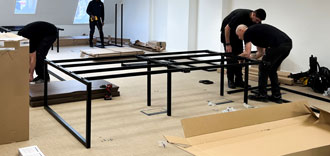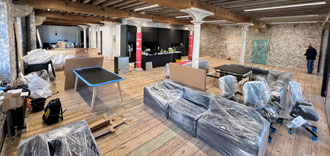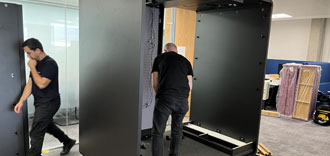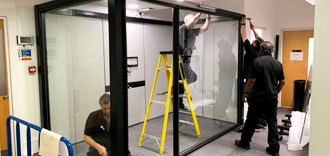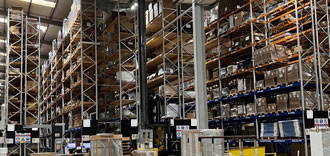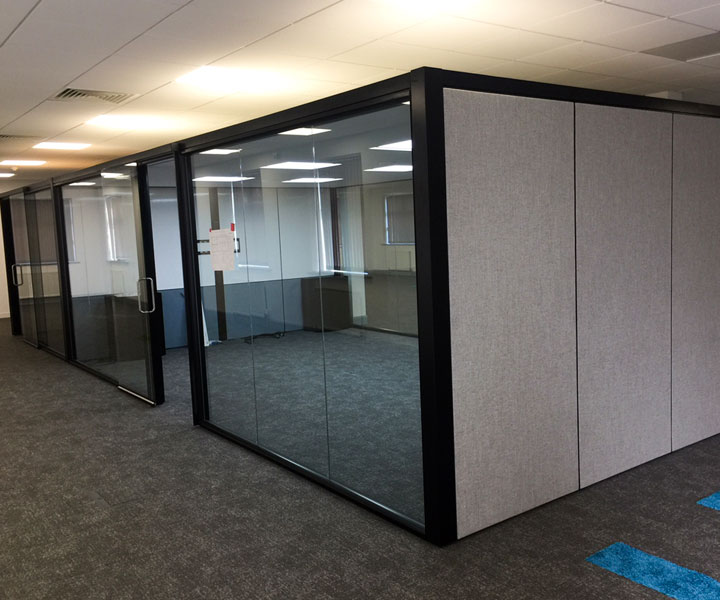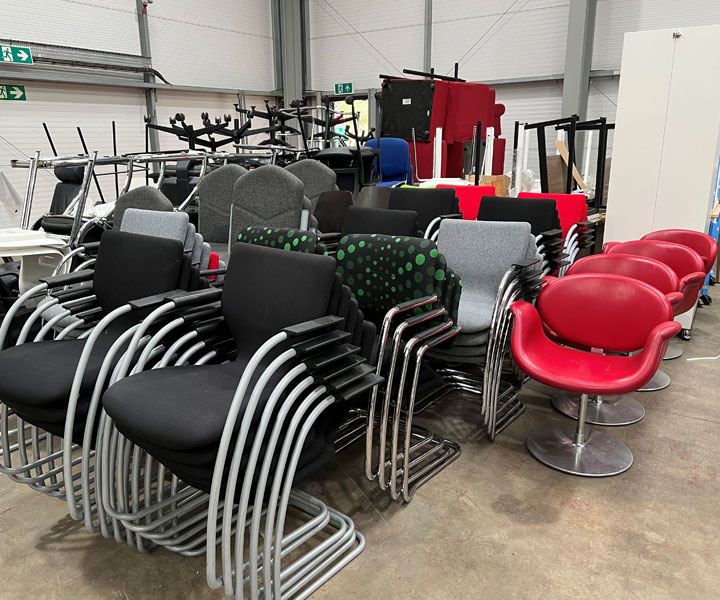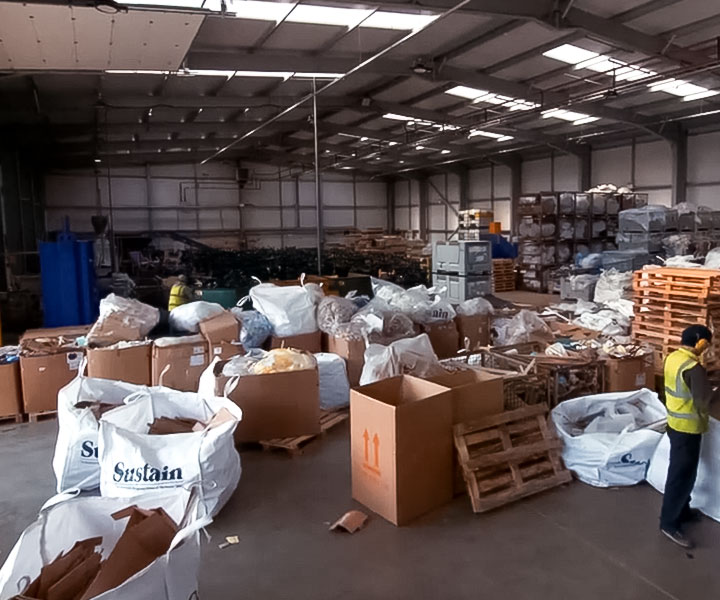Office Relocation: 9 Top Tips for a Tip-Top Office Move
- Hein de Vries
- News
- 15 Aug 2024
-
112views



Office Relocations: 9 Top Tips for a Tip-Top Office Move
Odysseus, Marco Polo, Erik the Viking, and YOU with your looming office relocation. You all have two things in common: An epic journey with great rewards and… the ever-present possibility of getting lost along the way. While the prospect of a fresh start can be exhilarating, the logistics of moving an entire office can be overwhelming. Office relocations are complex, requiring meticulous preparation. From heavy furniture to sensitive equipment, organizing an office move is a significant undertaking that demands careful planning and execution.
Whether your company is expanding, downsizing, or simply seeking a change of scenery, our 9 top tips for office relocation will help you get from Troy to Ithica without any undesired "adventures" on the way.
Why Move Your Office?
Companies relocate their offices for various reasons, each bringing unique opportunities and challenges. For client-facing businesses, proximity to their target audience can drive the decision. Creative industries may be motivated by an inspirational space in a fresh, unconventional setting. Companies looking to downsize might relocate to more cost-effective and efficient buildings. You may need more space to expand your team or your technology infrastructure. Whatever the motivation, an office relocation is an excellent opportunity to re-energize your workforce, foster excitement, and infuse your new space with positivity—yes, even if you're downsizing.
Our 9 Office Relocation Tips
1. Plan Meticulously
Effective planning is the cornerstone of a successful office relocation. Begin your planning process well in advance, ideally several months or even a year, before the move. Designate key individuals to oversee different parts of the transition. You may choose to allocate people based on areas of the office or by department. You can also allocate individuals according to core tasks, such as project management, client communications, IT setup, and communication with employees.
A comprehensive budget is essential. Big corporate moves don't come cheap, especially if you are fitting out a new space from scratch. Your budget should be as detailed as possible, covering all anticipated expenses—from moving services to fees charged by your recycling company to setting up the new office space. Don't forget to account for unexpected expenses, which are almost inevitable in a big move.
Create a detailed inventory of all office assets, including furniture, equipment, and supplies. Label each item and note its condition. Taking photographs of your assets in its current condition is a great idea. It will help you track belongings during the move and ensure nothing is lost. Your inventory will also be a great help if you need to submit an insurance claim resulting from move.
Finally, as part of your planning, create a post-move checklist. Tasks to consider are setting up security clearance for all your employees at the new building, connecting utilities, ensuring IT and telecom systems are operational, cross-checking the inventory, and resolving any issues from the move. This checklist will save you when post-move decision fatigue is at its peak.
2. Know Your Space
Understand the dimensions and layout of your new office. Remember to measure the elevators, stairwells and doors in your new building. There might be plenty of breathing room for your sprawling executive desk in the 5th floor corner office, but it won't mean a thing if you can't get it up there. Next, measure your major pieces of furniture and equipment and figure out if it will fit. This will help you decide what to move and what to leave behind, saving you time and money.
New buildings come with new rules. Familiarize yourself with the regulations. If you share the building, you might only be allowed to use certain elevators or move during off-peak hours.
Before the move, check that all utilities are set up and functioning. Electricity, sanitation, internet, and phone services are essential for continuity in business operations. Make sure everything is in place before your team arrives.
Consider hiring professionals to deep clean the new office and inspect and service the air-conditioning systems to ensure everything is in working order before the big day.
3. Stay on Track with a Dedicated Coordinator and Detailed Timelines
Appoint a dedicated coordinator to oversee the process. This individual should be highly organized, capable of multitasking, and possess excellent communication and budgeting skills. The relocation coordinator will be responsible for keeping the process on track, addressing employee questions, and ensuring every aspect of the move proceeds smoothly. If you have a large company, you should consider a task team of co-ordinators to oversee different aspects of the move.
Breaking down the relocation process into smaller, manageable tasks can make the entire project more digestible. Assign deadlines and people to each task, such as selecting a moving company, notifying clients, and packing up different departments.
Be as comprehensive as possible. Include every task you can think of that will affect the running of your company. Who is designing and ordering your new stationery? When will you test IT infrastructure before the move? When will the boxes and packing tape arrive? And by what time should employees have their desks packed up?
Share this timeline with your team so everyone knows what's expected of them.
4. Communicate, Communicate, Communicate
Clear communication with your employees sets expectations and will help everyone feel calm about the move. Get your employees involved. Have regular meetings to plan the move, find out what's bothering them, and better understand the focus areas you need to address. Ensure they know which coordinator they may reach out to when issues and questions arise.
A detailed, up-beat animation video to guide employees through the moving process, timelines and tasks, is a great way to ensure everyone knows what to do.
Office moves can be disruptive. Tell your clients well in advance. Inform them of your new location, any changes to contact information, and reassure them that their needs will be met during the transition. Utilize multiple communication channels, including your company website, Google listings, social media platforms, and direct email, to ensure everyone stays informed.
5. Safeguard Your IT Infrastructure and Communications Systems
Start immediately. Transitioning IT infrastructure, especially for large organizations, is complex and time-consuming. Running a million gazillion wires and getting your network servers, internet, and phone lines to work in a new location is a gargantuan task.
For knowledge businesses, unplanned downtime can cost more than the move. A seamless transition with as little interruption as possible is essential. Work closely with your IT department to plan the setup well in advance. Test all IT systems before the move to identify and address any potential issues.
Data protection is another crucial aspect of the relocation. Back up all critical data and ensure that sensitive data is only handled and transported by authorized individuals in your company. A great option is to use secure cloud-based storage to safeguard your data it during the move. This not only protects your information but also ensures compliance with GDPR.
Remember… if all else fails, have you tried switching it off, and switching it on again?
6. Use Professional Moving Services
Hiring a reputable moving company that specializes in office relocations can significantly ease the burden of your move. If you are moving offices in London, you are already in the right place! Get in touch with the experienced office relocation professionals at Installify, today.
If you are not in London, you will have to go the old-fashioned route. Ask for recommendations. Landlords often see multiple moving companies come and go, so your previous and new landlords may be a great place to start. Research companies online and read reviews from other businesses.
Obtaining estimates from multiple companies is a good practice to ensure you get the best deal. Your detailed inventory will be invaluable for this process, but it will be much better to request a representative from the moving company to visit your current and new location. This will ensure an accurate estimate.
Lastly, go with a licensed and insured moving company. Professional don't "wing it". They know your assets and your business are valuable and they will have protections in place for your move. The peace of mind that comes with professional movers can be invaluable, allowing you to focus on other aspects of the relocation.
7. If You Like It… Put a Label on It
Labelling your boxes and equipment is a simple but effective way to streamline the moving process. Clearly label every box in advance, including a letter, number, and location for each. Recording the contents in a spreadsheet will save time and prevent confusion when you unpack in the new office.
For extra security during the move, you may opt to instruct everyone to refrain from listing contents on the boxes. This will also make the clean boxes easier to reuse later.
Encourage employees to pack and label their own desk contents. Assigning consecutive numbers to each employee's belongings will help movers arrange items according to your layout map, making the setup in the new office more efficient.
Put the coffee and percolator in a different coloured packing crate. You'll thank me later.
8. Remanufacture, Refurbish, Resell, Recycle—But Really Keep the Environment in Mind
An office move can generate an enormous amount of garbage and have a serious environmental impact. Just imagine the sheer number of trees liberated from this sweet life to manufacture the boxes used for a move. Ecological concerns and shifts to a more circular economy are growing priorities for many ethically managed organizations. The good news is there is plenty you can do to make you move more sustainable.
Instead of throwing out old or worn furniture and items that don't tie into the new office vibe, send it for remanufacturing or refurbishment. If you do not need specific items at your new office, your move is an excellent opportunity to sell valuable furniture and recoup some of your moving costs.
Decluttering is essential, especially if you're downsizing. Once you have completed your inventory, decide what to keep, sell, donate, or recycle. Get your employees in on the action. By going "Full Marie Kondo" on their own workspaces, they can help create a more organized, productive new office.
9. Update Your Address
You may know where you are going, but how about the guy who fixes your printers? While it may seem obvious, one of the most surprising time and monetary expenses of a move to a new office is getting the word out. Beyond transferring your utilities like electricity, water, and your internet connection, a move essentially makes every business card, letterhead, and marketing flyer—and that snazzy promo from last year where you tell people to visit your office—redundant.
As soon as the lease is signed and your move is confirmed, order replacements for everything that has your address on it. Notify suppliers, clients, and customers of your new address and the timeline for resuming regular business operations. Update your company's website, social media accounts, and online listings like Google My Business to reflect the new location. Preparing these updates in advance can save you time and prevent communication issues after the move.
Also, go old school for a month before and after your move. Put up signs to announce the move and the new location. Habits are hard to break. Regular suppliers and even a few of your employees will undoubtedly show up at the old office. With a clear, friendly, sign they can make a U-turn with confidence.
Okay… here's one extra: 10. Tip 10: have a party.
Office relocations are daunting. Change can be difficult to process, especially for employees who thrive on structure and routine. Rituals can help people get closure, and no ritual is more effective than a final farewell party to your previous office. Use this opportunity to thank every employee for their contributions to the company and the move. Share stories and fun memories that happened in your old office. Remember the big milestones and build excitement for everything you hope to achieve in your new space. (Also, if alcohol is involved, make sure it's a Friday. You don't want to walk into the new office with a hangover. Just sayin’.)
Once everyone has unpacked in the new office, it is another great opportunity for a light get-together and debriefing (with cake, obviously). Here you can inaugurate the new office. You can update everyone on the progress of the move, and they can share any additional needs to complete your successful relocation to the new office.
Conclusion
By tackling your office relocation with gusto and positivity, you can facilitate a smooth transition to your new space. Moving to a new office is a significant undertaking, but with careful planning, effective communication, and the right resources, it can be a rewarding experience for your entire team. Whether you're seeking more space, a better location, or simply a fresh start, we hope these top tips for office relocation will help you navigate the complexities of your move and ensure a successful transition.
Remember, office relocation is more than just moving furniture—it's an opportunity to re-energize your company and set the stage for future success. So, embrace the change! The experts in office relocations team at Installify are ready to help. Reach out and get your office relocation project off to the best start.
 Craftsmen In Plaster
Craftsmen In Plaster
